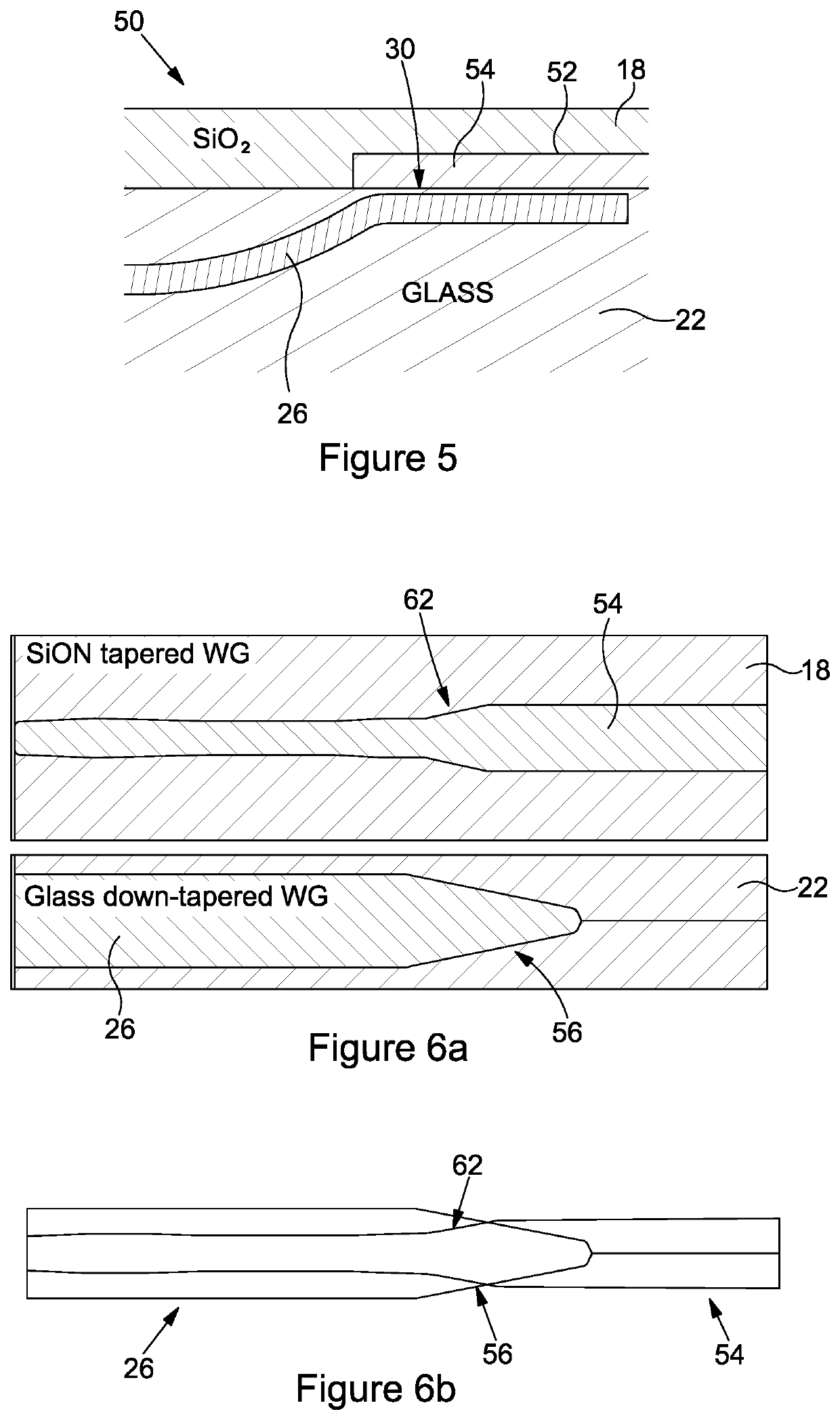Optical apparatus and methods of manufacture thereof
a technology of optical apparatus and manufacturing methods, applied in the field of optical apparatus, can solve the problems of narrow spectral bandwidth, poor insertion loss of grating couplers, and relatively small mode field diameters
- Summary
- Abstract
- Description
- Claims
- Application Information
AI Technical Summary
Benefits of technology
Problems solved by technology
Method used
Image
Examples
Embodiment Construction
[0118]FIG. 1 shows a cross-sectional schematic view of a photonic integrated circuit (PIC) platform 10. In this embodiment, the PIC platform 10 is in the form of silicon-on-insulator (SOI) structure. The PIC platform 10 comprises a silicon layer 12 on top of an underlayer 14 formed of SiO2 (silica) deposited on top of a bulk substrate 16 comprising silicon. The silicon layer 12 provides a high refractive index contrast optical waveguide. A cladding material (in this embodiment, SiO2) 18 is deposited on the silicon layer 12. In this example, the silicon layer 12 is 220 nm thick and the underlayer 14 is 2 μm thick. It will be appreciated that any appropriate materials may be used for the PIC platform 10 and the particular configuration, number of layers and layer thicknesses may be varied as appropriate.
[0119]FIG. 2 shows a first cross-sectional schematic view of an optical apparatus 20 integrated with the PIC platform 10 of FIG. 1. The optical apparatus 20 comprises a first substrate...
PUM
| Property | Measurement | Unit |
|---|---|---|
| thick | aaaaa | aaaaa |
| thick | aaaaa | aaaaa |
| dimensions | aaaaa | aaaaa |
Abstract
Description
Claims
Application Information
 Login to View More
Login to View More - R&D
- Intellectual Property
- Life Sciences
- Materials
- Tech Scout
- Unparalleled Data Quality
- Higher Quality Content
- 60% Fewer Hallucinations
Browse by: Latest US Patents, China's latest patents, Technical Efficacy Thesaurus, Application Domain, Technology Topic, Popular Technical Reports.
© 2025 PatSnap. All rights reserved.Legal|Privacy policy|Modern Slavery Act Transparency Statement|Sitemap|About US| Contact US: help@patsnap.com



